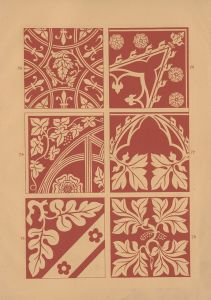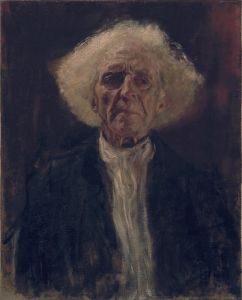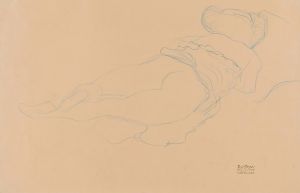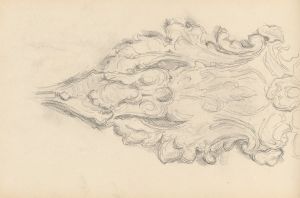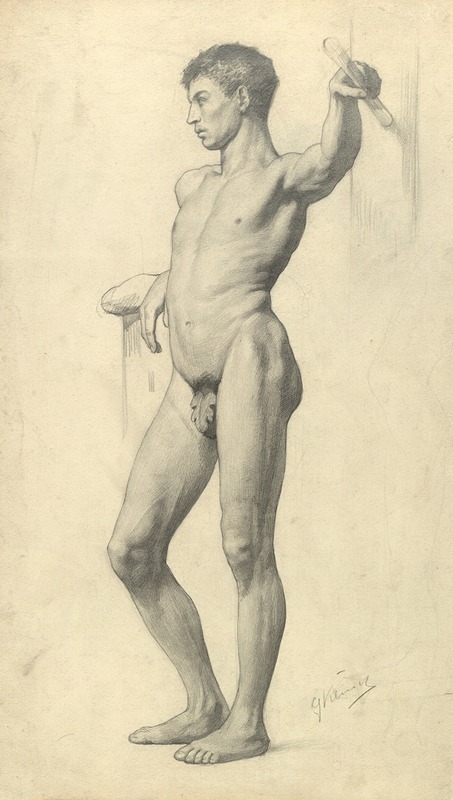
Männlicher Akademieakt
A hand-painted replica of Gustav Klimt’s masterpiece Männlicher Akademieakt, meticulously crafted by professional artists to capture the true essence of the original. Each piece is created with museum-quality canvas and rare mineral pigments, carefully painted by experienced artists with delicate brushstrokes and rich, layered colors to perfectly recreate the texture of the original artwork. Unlike machine-printed reproductions, this hand-painted version brings the painting to life, infused with the artist’s emotions and skill in every stroke. Whether for personal collection or home decoration, it instantly elevates the artistic atmosphere of any space.
Gustav Klimt, an Austrian symbolist painter, is renowned for his distinctive style and significant contributions to the Vienna Secession movement. One of his lesser-known works, "Männlicher Akademieakt," showcases his early academic training and mastery of the human form. This piece is a study of the male nude, a subject that Klimt explored extensively during his formative years.
"Männlicher Akademieakt" translates to "Male Academy Nude," indicating its role as an academic exercise. Klimt's education at the Vienna School of Arts and Crafts (Kunstgewerbeschule) provided him with a solid foundation in traditional techniques, which is evident in this work. The painting reflects the rigorous training that students underwent, focusing on anatomy, proportion, and the realistic depiction of the human body.
The artwork is characterized by its attention to detail and the realistic portrayal of musculature and form. Klimt's skillful use of light and shadow highlights the contours of the male figure, demonstrating his proficiency in capturing the subtleties of the human physique. This piece is a testament to Klimt's technical abilities and his understanding of classical art principles, which he later subverted in his more famous, symbolist works.
During the late 19th century, the study of the nude was a crucial part of an artist's education. It was considered essential for mastering the representation of the human figure, which was a central theme in art. Klimt's "Männlicher Akademieakt" is a reflection of this tradition, showcasing his capability to adhere to the academic standards of his time while also hinting at the innovative approaches he would later adopt.
Klimt's early works, including "Männlicher Akademieakt," are often overshadowed by his later, more decorative and symbolically rich paintings such as "The Kiss" and "Portrait of Adele Bloch-Bauer I." However, these academic studies are crucial for understanding the evolution of his artistic style. They reveal the foundational skills that enabled him to experiment with form, color, and composition in his mature works.
While "Männlicher Akademieakt" may not be as widely recognized as Klimt's later pieces, it remains an important part of his oeuvre. It provides insight into his development as an artist and his ability to blend traditional techniques with innovative ideas. This work exemplifies the transition from academic rigor to the more expressive and decorative style that defines Klimt's legacy.
In summary, "Männlicher Akademieakt" is a significant piece that highlights Gustav Klimt's early mastery of the human form and his academic training. It serves as a foundation for his later, more experimental works, illustrating the artist's journey from traditional representation to the creation of his unique, symbolist style.








